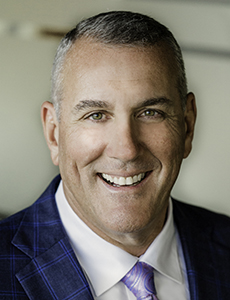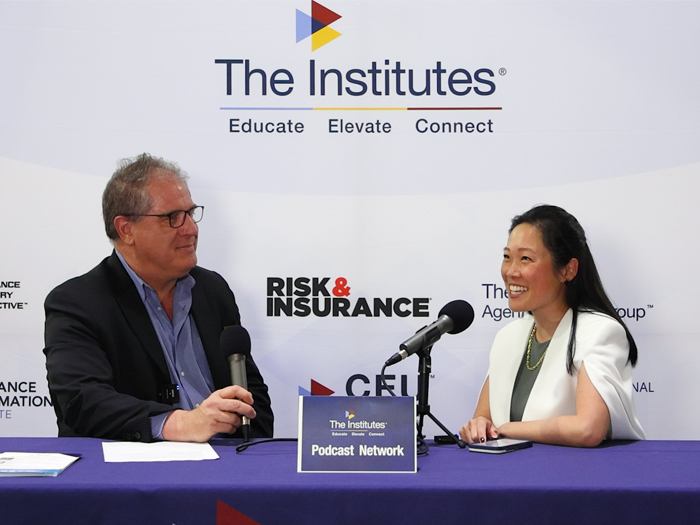Sponsored: myMatrixx
Three Myths About PBM Pricing Every Workers’ Compensation Payer Should Know

Pharmacy costs in workers’ compensation have been declining steadily for nearly a decade — down $1.1 billion over the past eight years, in fact. But that rosy news has a thorn.
Cost is just one indicator of workers’ comp program success, but it is one that can also hide problems. On the positive side, lower spend can be the result of reduced drug utilization or improved formulary management, reflecting attentive claims handling and strong clinical engagement.
In contrast, it could also signify that payers are simply choosing to direct their dollars elsewhere, prioritizing the minimization of upfront expenses and shifting investment away from the proactive clinical services that good PBMs have to offer.
Mike Cirillo, president of myMatrixx, believes the latter trend has become far more prevalent.
“When payers just see the numbers going down year over year, they can be lulled into a false sense of security,” he said. “People have stopped talking about clinical engagement, clinical outcomes and good claims management. Instead everybody is talking about price.”
Much of the current messaging in the marketplace promotes models that prioritize lowest price-per-pill over strong clinical management means to generate savings. When examining any pricing model however, it’s important to separate myth from fact and know the important role that strong oversight plays in a claim strategy.
To help, here are three myths that have developed in the market and reasons why prioritizing clinical management — which must include a comprehensive pharmacovigilance program to ensure clinical appropriateness and improve patient outcomes — along with price will generate greater value at a lower cost over the long term.
PBM Pricing Myths
1. “Rebates are the best way to lower costs in workers’ compensation.”

Mike Cirillo, President, myMatrixx
“Rebates really only apply to brand name medications. Today, roughly 90% of the medications dispensed in workers’ comp are generic, so rebates don’t even apply to the vast majority of workers’ compensation programs,” Cirillo said.
Rebates also take anywhere from six to nine months to process. In some cases, adjusters will need to reopen closed claims to apply the rebate. This not only disrupts workflow efficiency but may also skew claim duration and closure statistics.
Instead, Cirillo emphasizes the importance of strong clinical management as a path to both cost savings and, more importantly, better outcomes.
“myMatrixx applies applicable rebates to pricing for any name brand medications deemed necessary for a claim. But we believe the best thing we can do to serve our clients is to increase utilization of equivalent generics and provide clinical oversight to ensure that unnecessary medications are not prescribed in the first place,” he said.
To underscore this, Cirillo cites a generic efficiency rate (GER) — the percent of generic drugs dispensed when available — at or near 100% for all clients according to the 2019 myMatrixx Drug Trend Report.
2. “Pay only what your PBM charges the pharmacy.”
Another tenet of some pricing models is the promise that payers will be billed exactly what the pharmacy charges. What needs to be accounted for with this method, often called pass-through or transparent pricing, is the relationship between the PBM and the pharmacy.
“Scale and volume matter,” Cirillo said. “PBMs handling the most transactions, with nationwide network contracts and pharmacy negotiation professionals on staff, can have the leverage to secure significantly lower pricing for clients.”
Pharmacy price matching may deliver the transparency that payers want, but it doesn’t necessarily secure the best value. Fixating on a “fair price” oversimplifies the multivariate nature of pricing prescription drugs.
3. “All of your PBM services for one flat administration fee.”
The flat admin fee is another example of disconnect between price and value.
“There are a lot of activities that go into being a comprehensive PBM which allows us to drive the greatest value and the lowest possible cost for our clients,” said Cirillo. “The old adage is true: you get what you pay for.”
Administration fees may only cover the adjudication of a prescription. Clinical oversight, proactive identification of risk, early intervention capabilities and access to supplemental therapies are not always included.
“When people talk about transparency, they are generally referring to unit costs and drug pricing only. That’s missing out on the PBM’s real value, which lies in clinical services that bring the injured worker, the prescriber and the pharmacy together to deliver the highest quality of care and get people back to work sooner,” Cirillo said.
Prioritizing Price Masks Emerging Issues
The opioid epidemic is multi-dimensional and complex, but it does offer a teachable opportunity to look at what can happen when payers focus on prescription price ahead of the overall quality of care.
“Opioids are generally low-cost medications. But by now we understand the many behavioral, environmental and physical factors that increase risk of opioid abuse, and how these drugs can actually impair recovery over the life of a claim,” Cirillo said.
“This is just one example, but it demonstrates how prioritizing price can lead payers to overlook emerging issues.”
Today, behavioral factors like stress and anxiety are chief among those emerging issues.
This year has taken its toll on everyone and will undoubtedly exacerbate many physical conditions that increase risk of injury or impair recovery. The best path forward is to proactively educate employers of the risk, connect workforces with stress-management resources and engage mental health specialists early in the recovery process when injuries do happen.
These steps can reduce the likelihood than an injured worker will become dependent on or even require pain medication, helping to minimize pharmacy spend. A payer overly focused on the price-per-pill, however, is likely to overlook the indirect but meaningful benefits of proactive, whole-person care.
How a Focus on Clinical Outcomes Pays Off
A PBM that prioritizes clinical outcomes naturally minimizes pharmacy spend by proactively identifying high-risk patients and intervening early with a multidisciplinary approach.
“I believe directing workers’ comp care is a two-step process. The first step is using big data to identify where the problems are,” Cirillo said.
myMatrixx aggregates and analyzes large volumes of claims data to pinpoint common factors in cases where recovery is delayed or incomplete. Often, these factors include physical comorbidities like obesity and diabetes, mental health issues like substance abuse, social factors such as living alone, and environmental barriers like lack of reliable transportation.
“We use that data to develop a risk score for each injured worker, which drives different solutions and interventions depending on what the risk factors are,” Cirillo said.
If, for example, an injured worker is taking an opioid medication at a dose that exceeds the tolerable minimum effective dosage (MED), one intervention may be to contact the prescriber to seek justification and/or recommend a lower dose. If needed, myMatrixx can also take additional steps to verify adherence to the new dosage.
Another approach is to re-evaluate the care plan completely, engaging a behavioral health provider to help wean the injured worker off that drug altogether and identify alternative strategies to cope with pain.
These interventions are only possible when PBMs have access to multidisciplinary clinical expertise.
“We consult with a team of clinical pharmacists with expertise in the workers’ comp space, so they understand the unique challenges we face. We have therapeutic resource centers, consisting of nurses, pharmacists and physicians, that help us engage directly with prescribers and injured workers. We’ve also built a clinical suite of partnerships and modalities, including drug testing partners as well as behavioral health specialists and psychologists — people who truly understand the process of recovery,” Cirillo said.
Data backs up the efficacy of this proactive, holistic approach. According to myMatrixx’s 2019 Drug Trend Report, payers total drug spend decreased by 6.1% in 2019, yielding a net decrease of 0.4% despite an uptick in utilization.
According to Cirillo, clients can speak to the benefit of this approach as well. Ron Warble, Executive Vice President of Longtime myMatrixx client Amerisys had this to say,
“myMatrixx has been an invaluable partner in our efforts to not only contain costs and maintain transparency of pricing, but more importantly to assist in achieving our claims and patient management strategies on a long-term basis. These strategies help facilitate a prompt return to work, as well as enhance or promote rapid recovery, while avoiding adverse clinical sequela sometimes seen in long-term care or prolonged pain events.”
Adds Cirillo, “The bottom line is we really need to focus on good claims management and good clinical practices. That keeps cost down the real way — by helping injured workers heal and get back to their lives faster.”
To learn more about myMatrixx suite of products and services to help grow your business, visit https://www.mymatrixx.com/pbm-solutions/.
This article was produced by the R&I Brand Studio, a unit of the advertising department of Risk & Insurance, in collaboration with myMatrixx. The editorial staff of Risk & Insurance had no role in its preparation.










